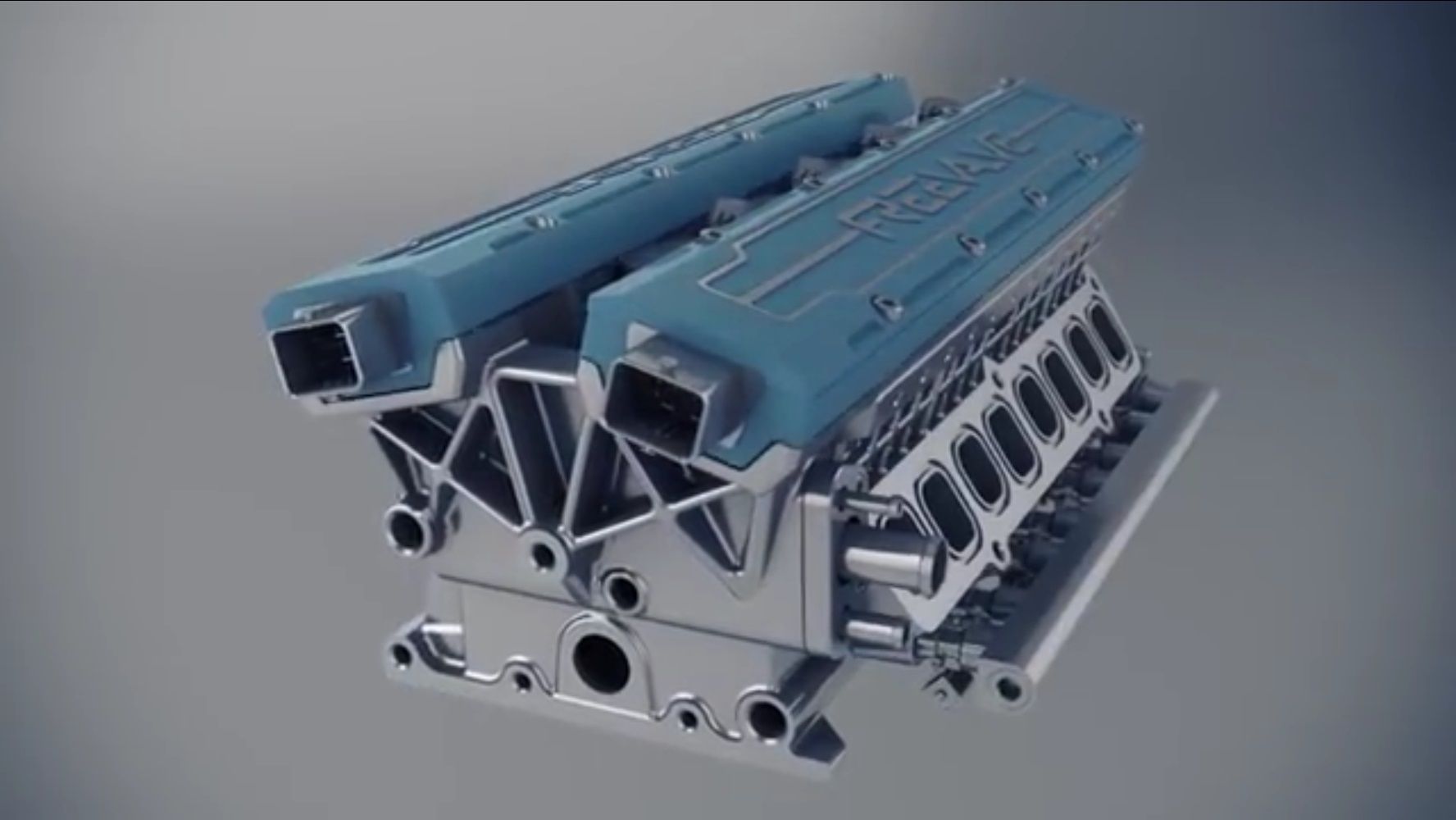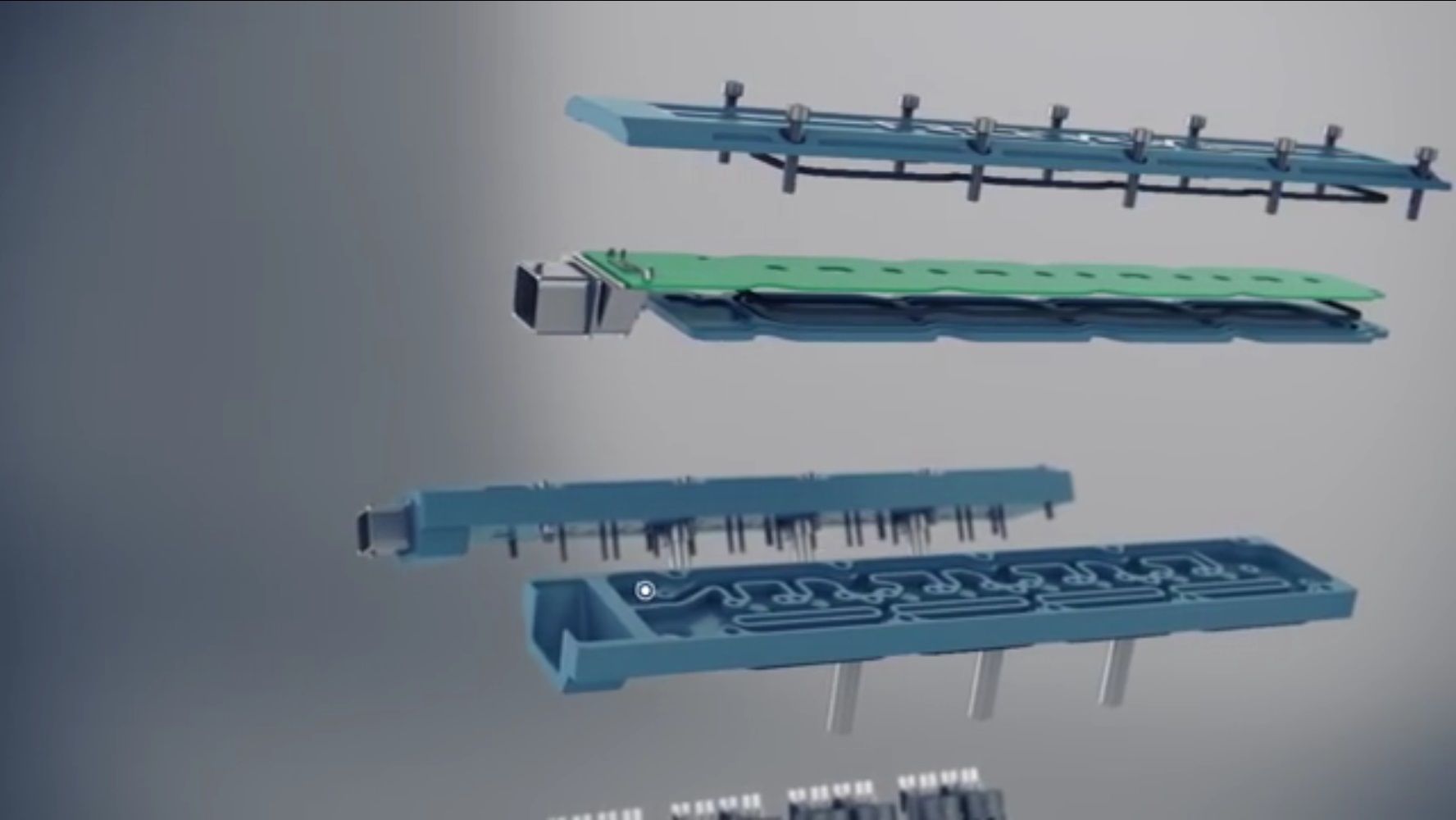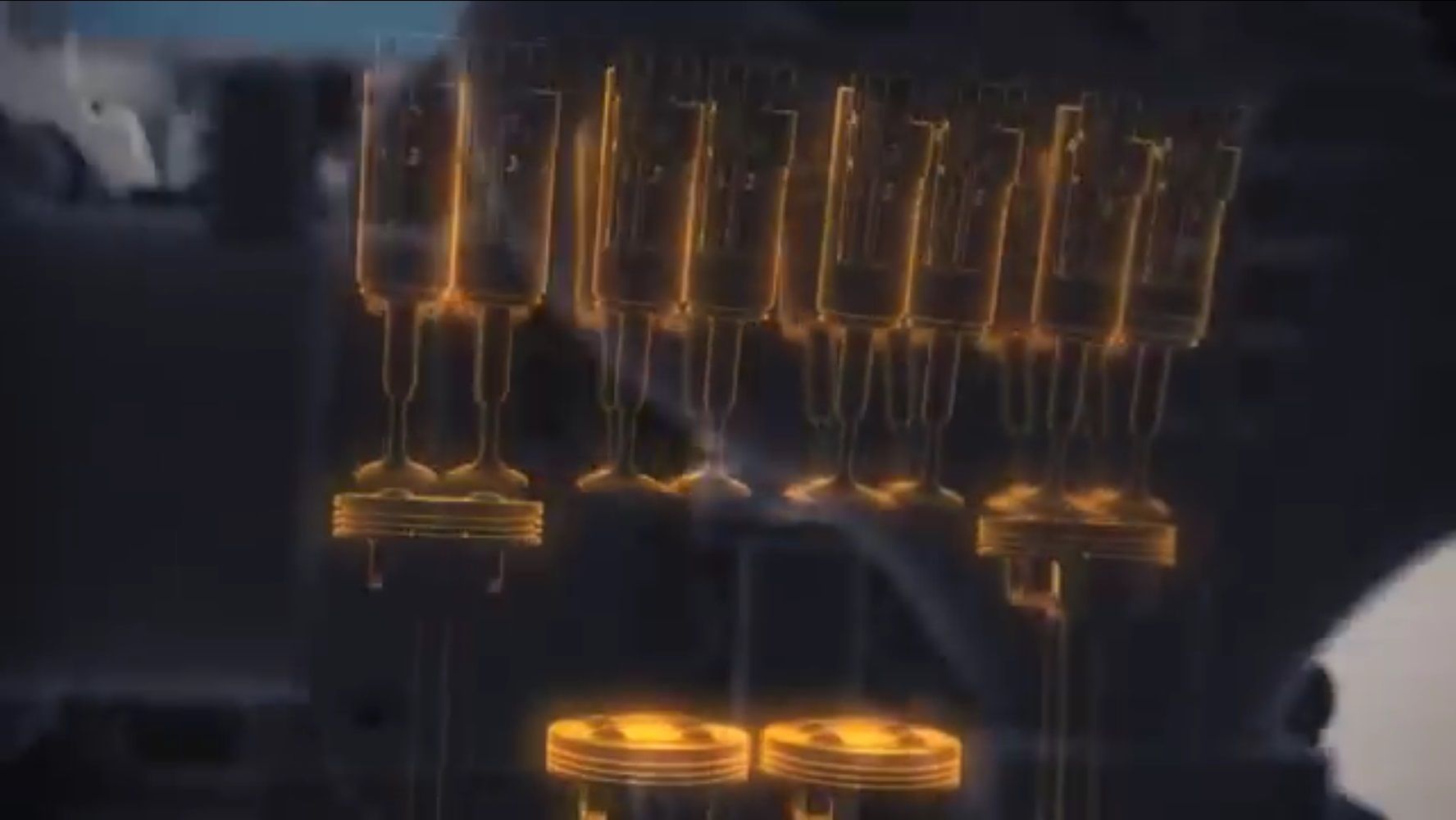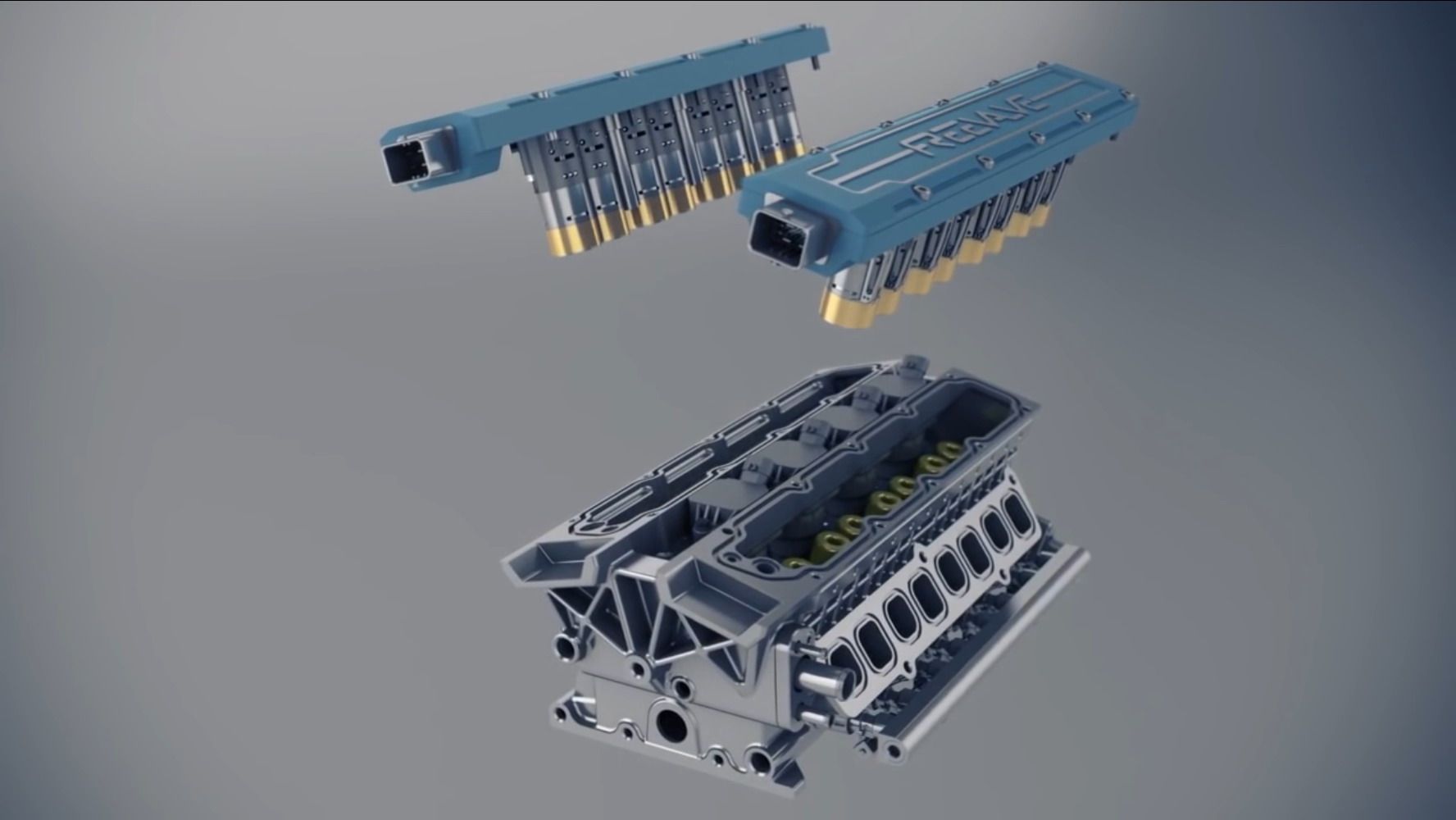Koenigsegg->ke43 is known for its exclusiveness, but more than that, it is known for its extreme performance, drivability, and environmentally conscious way of thinking. That is why Freevalve has partnered up with Koenigsegg in hopes of one day implementing its new valve control technology->ke1701 into a future vehicle->ke2048 from Koenigsegg.
As you will see from watching this recently released video->ke278 from Freevalve, each valve is individually actuated using electro-hydraulic-pneumatic actuators. Previous attempts at this kind of technology haven't necessarily failed, but it came with technical problems, packing disadvantages, and a cost much higher than that of using the traditional camshaft. Various manufacturers have tried systems that use electromagnetic or electro-hydraulic actuators, but neither setup was viable for use on a large scale.
So, what makes Freevalve’s system so different, what are the benefits, and what about the reliability factor? Watch the short video in its entirety, then read on to learn a little more about the system.
The Benefits
There are many advantages to the implementation of Freevalve’s technology in the internal combustion engine. Getting rid of the traditional camshaft means gaining more control over the valvetrain. The engine’s control computer can precisely control each valve to allow for better economy or performance, depending on driving conditions. On models that have selectable driving modes, this technology will further increase the capabilities of that system.
Next on the list of benefits is the potential reduction in weight over multiple-cam engines. In addition, it will also reduce drag on the engines crankshaft since it no longer has the responsibility of turning the camshaft. This creates the potential for the engine to generate more power than those with a traditional, cam-based valvetrain.
In addition to performance and fuel economy gains, this technology can reduce the overall size and weight of the engine. As you can see from the video, there isn’t really a need for the traditional valve cover. The valve actuators side down inside the cylinder head, just like the spark plugs. Pressurized oil is pumped in through a rail (similar to the valve body of the conventional automatic transmission) to the valve actuators, preventing the need for large valve covers and potentially leading to smaller cylinder heads.
Potential Problems
My biggest concern with the design isn’t the potential failure of valve actuators themselves. Sure, electronics fail, and these days most feel that more electronics mean more frequent and more expensive repairs. I don’t think that is the case here, as each set of intake and exhaust valves for each cylinder have their own actuator pack. We have no idea what an “actuator pack” will cost but replacement will probably be rather simple – requiring removal of the rail as a whole, replacing the pack, a few seals on the rail and assembly. If the technology takes off and becomes mainstream, which it probably will, the price of parts for this system will drop as aftermarket manufacturers develop their own replacements. Think back to when manufacturers initially started using individual coil packs for each spark plug. They failed on a regular basis and were rather expensive. Now, replacing the same coil pack on a 2005 Dodge Ram, for instance, will set you back $25 with an aftermarket part and only take 25 minutes of your day. Expect this technology to follow the same trend.
My biggest concern is how the pressurized oil and air will be sealed within the rail or valve body of the freevalve system. From watching the video, it looks like plastic, or rubber gasket is being used as a seal between the rail itself and the wormholes that distribute oil and air to the actuators. This I see as problematic, as well as the sealing of the actuators themselves. The system will only work well if a good seal can be maintained between the rail and the cylinder head itself. Loss of compression through the valvetrain will result in lost power and fuel economy, not to mention other problems. Loss of pressurized oil or air in the rail presents a whole mess of problems.
If the system is going to be reliable and stable, I see the actuators and valves being sealed by one or more metal rings, similar to that of piston rings. I also see the need for a metal-composite crush gasket being used to seal the different layers of the control rail. If Freevalve can keep the system properly sealed, the overall design should lead us into the next evolution of the internal combustion engine.
On a side note, I would like to touch base on the pressurized oil and air concept. Oil can be pressurized via a proportioning valve. By bottlenecking the supply of oil to the valve under normal pressure, pressure can be generated to much higher levels than that generated by the traditional oil pump. It could also be pressurized by use of a belt-driven, high-pressure oil pump, similar to that used on diesel engines. Pressurized air will likely come from an electric air pump, or one driven by the serpentine belt. If either oil or air systems are driven by the belt, it will create some drag, but the benefits will surely outweigh the drag of a belt- or chain-driven camshaft.
Failure of either system, however, would pose serious problems. If an actuator pack fails, no big deal – the computer can compensate and disable that cylinder, providing a limp-home mode. But, if the system loses its supply of air or oil, your car will be dead in the water. A backup system will need to be in place to prevent potential damage or engine failure, at least until a proven system can be put in place.
The Proof is in the Pudding
Like me, I’m sure you want a little proof to the claims made by Freevalve concerning the increase in fuel economy and power. The system is still in a fairly early age of development, but Freevalve has been doing some serious real-life testing.
Freevalve’s current design has been verified to reduce fuel consumption by 12 to 17 percent when compared to current technology. Specifically, it has been compared on Freevalve’s website to a “state-of-the-art, 2.0-liter four-cylinder that utilizes direct injection and variable cams. This test was performed on a single-cylinder engine developed by powertrain manufacturer AVL (another one of Freevalve’s partners) back in 2011 and showed the potential for even more improvement. Not enough? Great, because there's more.
The freevalve system has been used to control the intake valves on a SAAB 9-5 from 2009 to 2011. In those three years, Freevalve managed to drive more than 55,000 km (34,175 miles) of normal, everyday driving. The engine in that SAAB 9-5 has also reliably passed cold-start testing in temperatures as low as -20 degrees Celsius (-4 degrees Fahrenheit.) Adding to that, the same test vehicle has also been driven with the system fully operational – both intake and exhaust valves controlled by the Freevalve system – for 10,000 km without failure.
Needless to say, Freevalve is on to something. Despite its early stage of development, early testing and the design itself is shaping up to be highly plausible as a future technology. The real question is whether or not Freevalve can go mainstream before electric cars take over the world.




